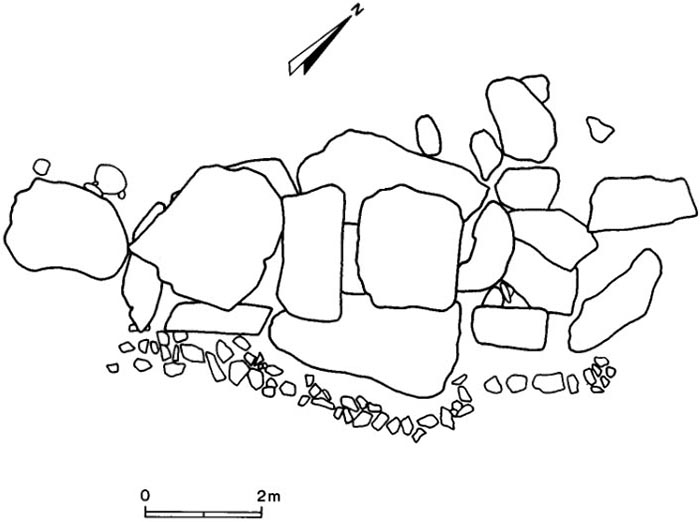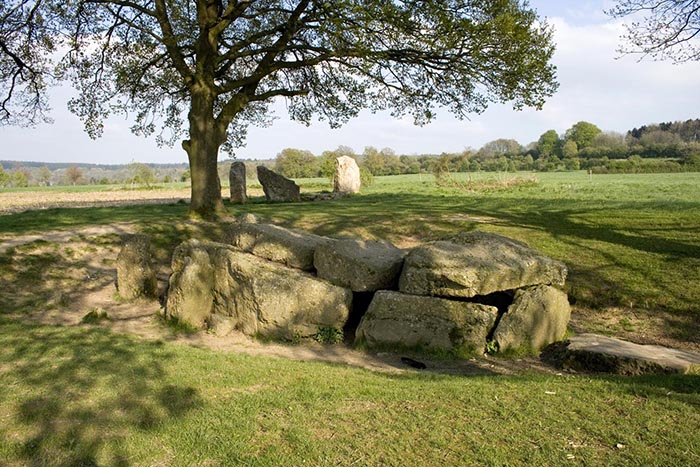The Dolmen of Oppagne (aka southern gallery grave, Wéris II )

The Dolmen of Oppagne" (Wéris II) ) was discovered at the end of the 19th century by a farmer’s son. Félix, the son of farmer Antoine Lambert, wanted to help his father by removing several big boulders which were a nuisance as they got in the way when they wanted to plough one of their fields.
However, young Félix was a thoughtful chap and before he set to on removing the boulders he inspected them more carefully. Upon close examination he noticed a remarkable resemblance between the stones in his father’s field and those which comprised the Dolmen of Wéris about one mile distant!
Fortunately for us he was correct and his realisation of their significance meant that the stones remained where they were.

The internal dimensions of the burial chamber are 5 metres long by 1 to 1.8 meters wide and from 0.7 to 0.9 meter high. The walls of the chamber are the rear slab or 'chevet)' (w), four upright slabs (o-s-t & u), supporting three capstones that form the roof (p-q-r), and the port-hole slab (m).
The port-hole slab has an arched opening in its middle in the shape of an 'n', this is the passage through which the bodies were passed into the chamber. In front of this port-hole slab are two other slabs lying on the ground (h & i) - these were probably meant to be set upright in order to close the chamber. Like the Dolmen of Wéris this gallery grave has a short uncovered porch (b & e and a & j).
On the ground near the back of the burial chamber lies a large slab of puddingstone (x). This is slightly lower in the ground than the grave itself; why it is here and what it means are unknown at present; a further mystery to be solved.
The many small stones that can be found on the site were used as 'stop stones'; i.e. stones to fill-in the gaps between the larger slabs so that the chamber was completely sealed.

These dolmens were built in the Neolithic Period some 5000 years ago by people of the SOM Culture. Human bone fragments confirm that burials took place in the Dolmen of Oppagne of at least ten individuals of different ages. The grave-gifts discovered, include scrapers, hammer stones and six-tanged arrowheads dating from the Neolithic Period. Pottery fragments, dating from the later time of the Bell Beaker culture in the Bronze Age indicate the possible re-use of the monument between 2200 and 2000 BC.






